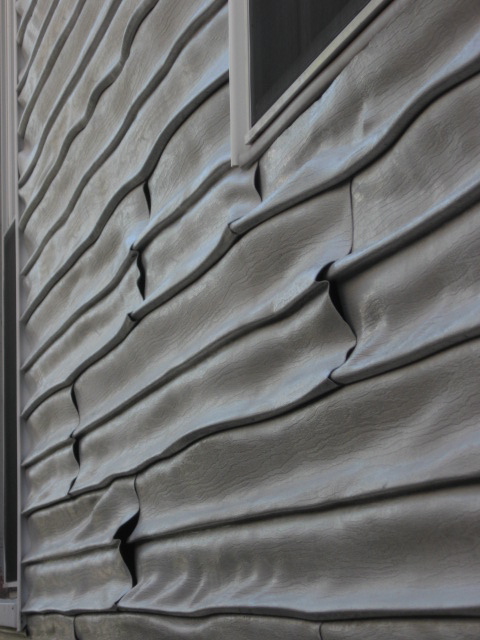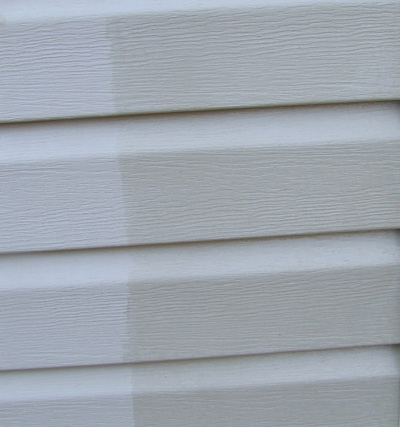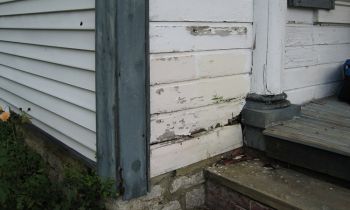Siding Series 1: 10 Signs Its Time to Replace Your Siding
Sure, replacing your house’s siding might not top your to-do-list of home improvement projects. But maybe it should be. The optimal time to replace your siding isn’t when a specific and exigent problem exists with your siding.
Regardless of the type of siding protecting your house, it will need regular maintenance and eventually need to be replaced. Breaking and cracking siding as it ages is a problem you will want to address before it affects other parts of your house. Once it lets in a leak, the time may have already passed to address it without paying for costly fixes. There is a variety of telling signs that can help you determine whether your new siding or at the very least, repairs.
By regularly inspecting your home’s siding, you can get a better picture of the condition of your siding. Here’s what to look for:
1 – Dry Rot
Dry rot can be found when tapping on your siding with the rubber handle of a tool. The key is to detect such problems before l are noticeable by the naked eye. The fungi that cause dry rot start below the siding’s surface, eventually eating away the body of your siding until only the top layer remains intact. Believe it or not, a situation where the siding still looks good on the outside while the bulk of the material is possibly rotten. Siding pieces suffering from decay should be replaced immediately because extensive dry rot requires you to replace your siding on your entire house.
2 – You Keep Repainting Your Home
Here’s another sign that it’s time to replace your siding. Let’s say every 5-6 years you have to apply a new coat of paint to your siding. It’s likely an indication that something is wrong with your siding. Quality siding will maintain its shape and color for at the very least eight to ten years. Pealing, cracking, or chipping, pealing is a sign that it might be time to seek a replacement.
 3 – Warped or Rotted Siding
3 – Warped or Rotted Siding
It pays to also do frequent visual inspections of all areas of your home’s siding. With a screwdriver or something similar, poke under the siding that appears warped to learn whether or not the under layer is still solid. If the underlayer feels soft or it has started to rot, you have found a definite indicator that your siding must be replaced.
4 – Increased Cooling and/or Heating Bills
There are many reasons for suddenly higher energy bills, and the first inspection should take place on your roof or in your attic. It may be time to replace your siding if you can rule out those two areas.
Low-grade wall insulation together with underperforming siding could be the cause for excessive cooling and heating costs. Check the seems to see if they could be letting hot or cool air out of your house.
5 – Loose or Cracked Siding
1-2 loose or cracked boards after a storm are likely no cause for alarm, as it is often possible, depending on your comfort level, for you to replace those boards. If you choose to do so, it’s imperative to verify that no layers underneath are broken or cracked.
Should larger sections show signs of being loose or cracking, however, there might be a more severe problem that would require the work of a professional contractor to replace your siding.
Regardless of how extensive the damage is, broken, loose, or cracked pieces must be removed from your home and replaced. This prevents water from seeping behind the damaged pieces.
6 – Inside the Home: Loose Wallpaper / Peeling Paint
While not immediately obvious, loose wallpaper and peeling paint are both signs that your siding is faulty. With poor siding, moisture can seep underneath the outer layer, where it percolates your wallboard.
7 – Holes
The smallest holes should be cause for concern. Typically, holes in your siding will be the result of insects. Insects that have gotten passed your siding are enough to make a person squirm, but add to that the damage from the holes, which allow moisture to get in.
8 – Mildew, Fungus…Mold!
Any growth on your home’s siding, particularly near the seams, might be a sign that water is passing through and being held in the wall. The effect of this pooling is mildew, fungus, and/or mold. Growth on its own isn’t worth being alarmed, but it does warrant deeper investigation.
9 – Bubbling
Bubbles under your siding are a near guarantee that water is being trapped behind the siding, which is a huge red flag. Siding is supposed to keep moisture away from your interior walls.
 10 – Severe Fading
10 – Severe Fading
All siding must eventually be replaced, and most types are built to hold their color for only as long as their rating. Fading is a sign that the siding’s waterproofing has run its course.
Stay tuned for the next article in the Van Martin series, where we evaluate all popular types to help you arrive at the best decision.



